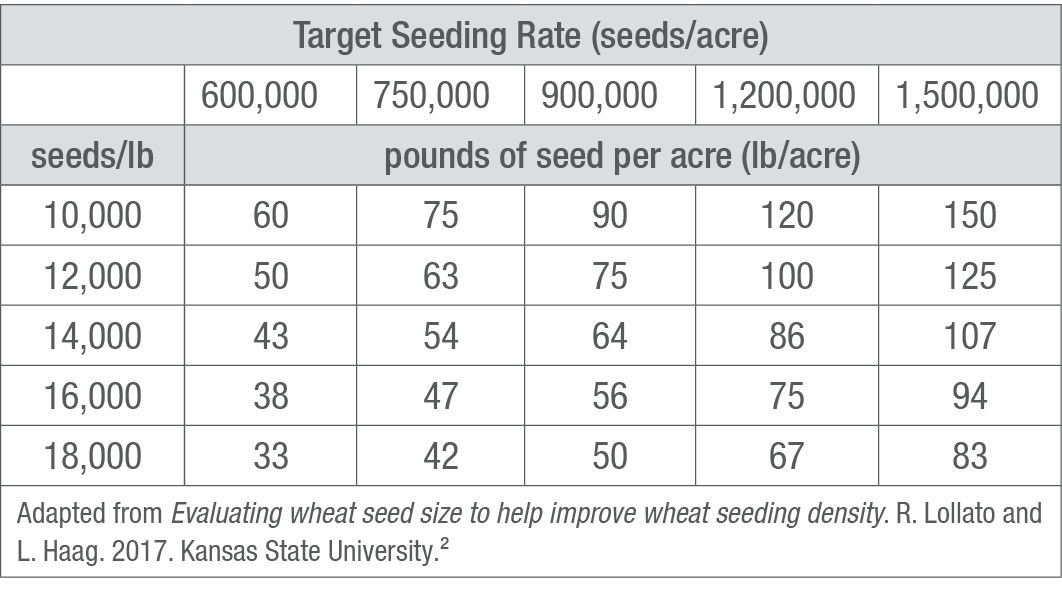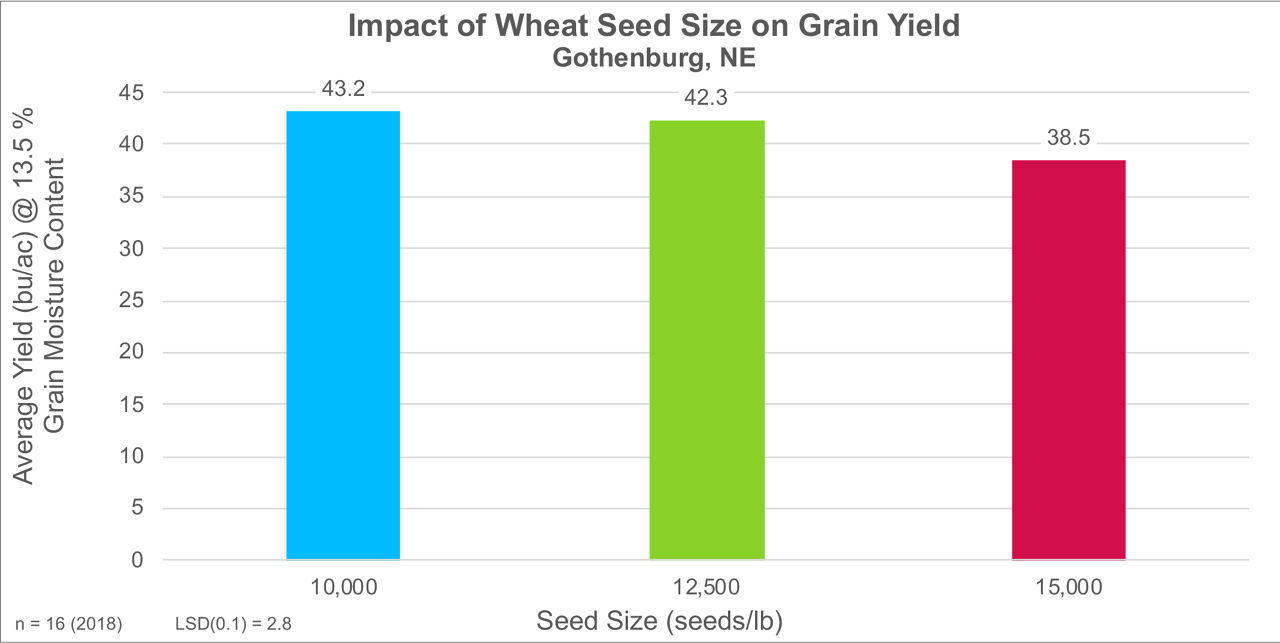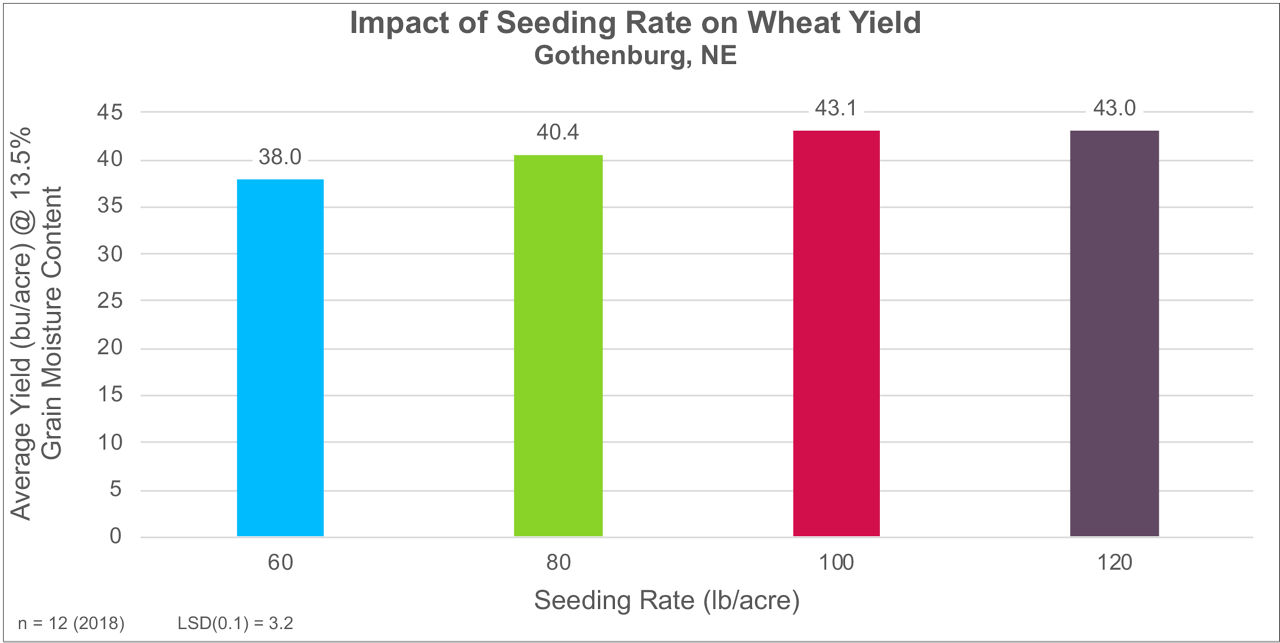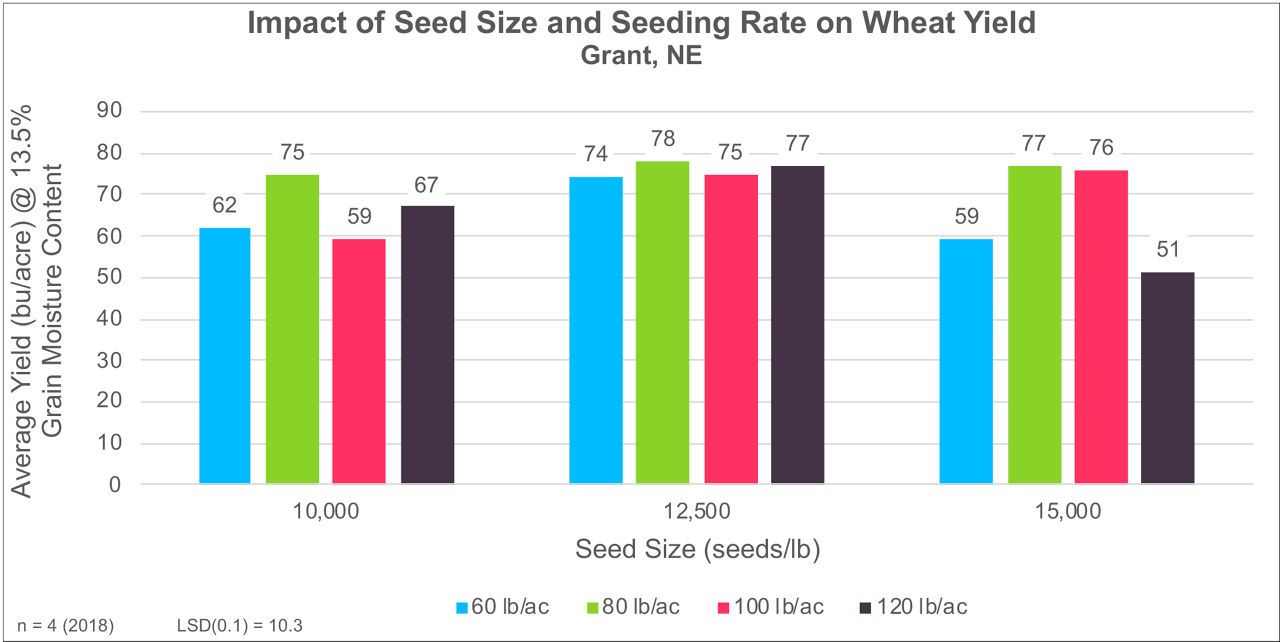Impact of Wheat Seed Size and Planting Rate on Yield
October 17, 2024
Background
Wheat seed size can vary depending on the genetics of the variety and the environmental conditions. The number of seeds per pound (seeds/lb) can be as low as 9,000 for larger wheat seeds to as high as 18,000 for smaller ones.1,2 Seeding rates for wheat are often measured on a pounds-of-seed-per-acre (lb/acre) basis rather than a seeds-per-acre (seeds/acre) basis. The metering system of the grain drill should be adjusted for seed size, since the number of seeds/acre that are planted can vary widely.
Small seeds flow through the meter faster than larger seeds. For example, a 75 lb/acre seeding rate for a 15,000 seeds/lb product would result in over 1.1 million seeds planted per acre, while a larger-seeded product with 9,000 seeds/lb would plant about 675,000 seeds/acre at the same seeding rate.1 Table 1 provides a guide for the lb/acre of seed, adjusted for the size of the wheat seed, needed to reach the desired seeding rate.
Table 1. Guide for adjusting the target pounds of wheat seed per acre based on seed size.

While seed size and seeding rate can directly impact the cost of seed per acre, can they impact wheat yield?
Bayer Crop Science Research Trials
The Bayer Gothenburg Learning Center conducted trials at two locations in 2018 to study the effects of seed size and seeding rates on wheat yield. The two sites were located at Gothenburg, NE and Grant, NE. The soil texture at both sites was silt loam. Planting took place in the fall of 2017, with harvest occurring in July 2018.
Experimental factors:
- Three seed sizes: 10,000; 12,500; and 15,000 seed/lb
- Hard red winter wheat variety: WestBred® brand WB4458
- Four seeding rates: 60, 80, 100, and 120 lb/acre
- Experimental design: Randomized complete block
- Replications: 4
Results:
Gothenburg, NE
No significant interaction between seeding rates and seed size was detected. Seed sizes of 10,000 and 12,500 seeds/lb produced similar average yields; however, the average yield was significantly reduced with a seed size of 15,000 seeds/lb (Figure 1). Incremental increases in the seeding rates from 60 lb/acre to 100 lb/acre improved yield; however, no further increase in yield was observed between the 100 and 120 lb/acre seeding rates (Figure 2).


Grant, NE
In this trial, a significant interaction was observed between seed size and seeding rate. The 12,500 seeds/lb seed size produced more consistent average grain yields across the four seeding rates compared to the 10,000 and 15,000 seeds/acre sizes (Figure 3).

University Research Trials – Wheat Seed Size
Research trials were conducted in 2023 in eastern Washington by Washington State University to determine if seed size influences the early season growth and grain yield of spring wheat. Three seed sizes ranging from about 9,383 seeds/lb for large seed to 16,170 seed/lb for small seed were tested at four locations, with four replications per site. Their results indicated that large seed increased grain yield by 13% while increasing stand counts and canopy cover by 17% and 49%, respectively.3
In other trials, which used soft white winter wheat planted in the fall of 2022, researchers found that larger seed produced 22% higher stand counts (plants per square foot) compared to smaller seed. At one of the four locations for this trial, large seed had an eight bu/acre advantage over smaller seed. Other observations found that at one site, smaller seeds had reduced stand counts, with stand counts reduced by an average of 4% for each increase of 1,000 seed/lb in seed size. A second site had a similar trend.1
University Research Trials – Wheat Seeding Rates
Research with soft white winter wheat from eight environments in Washington during 2018 and 2019 found that average grain yields increased across four seeding rates ranging from 350,000 to 1.3 million seeds/acre. A positive response to increasing seeding rates was consistently observed at all locations in this study.1
Sources
1Neeley, C. and Esser, A. 2023. Numbers count when seeding. Washington Grain Commission. https://wagrains.org/articles/numbers-count-when-seeding/
2Lollato, R. and Haag, L. 2017. Evaluating wheat seed size to improve wheat seeding density. Kansas State University Extension, Agronomy eUpdates. Issue 651. https://eupdate.agronomy.ksu.edu/article_new/evaluating-wheat-seed-size-to-improve-wheat-seeding-density-651-2
3Neely, C. and Gerrish, B. 2023. Seeding rate and seed size considerations for dryland wheat production in the Pacific Northwest. Washington State University. https://wpcdn.web.wsu.edu/cahnrs/uploads/sites/16/2023-ASA-Spring-Wheat-Seed-size-and-seeding-rate-poster.pdf
Web sources verified 9/19/2024. 1710_453837